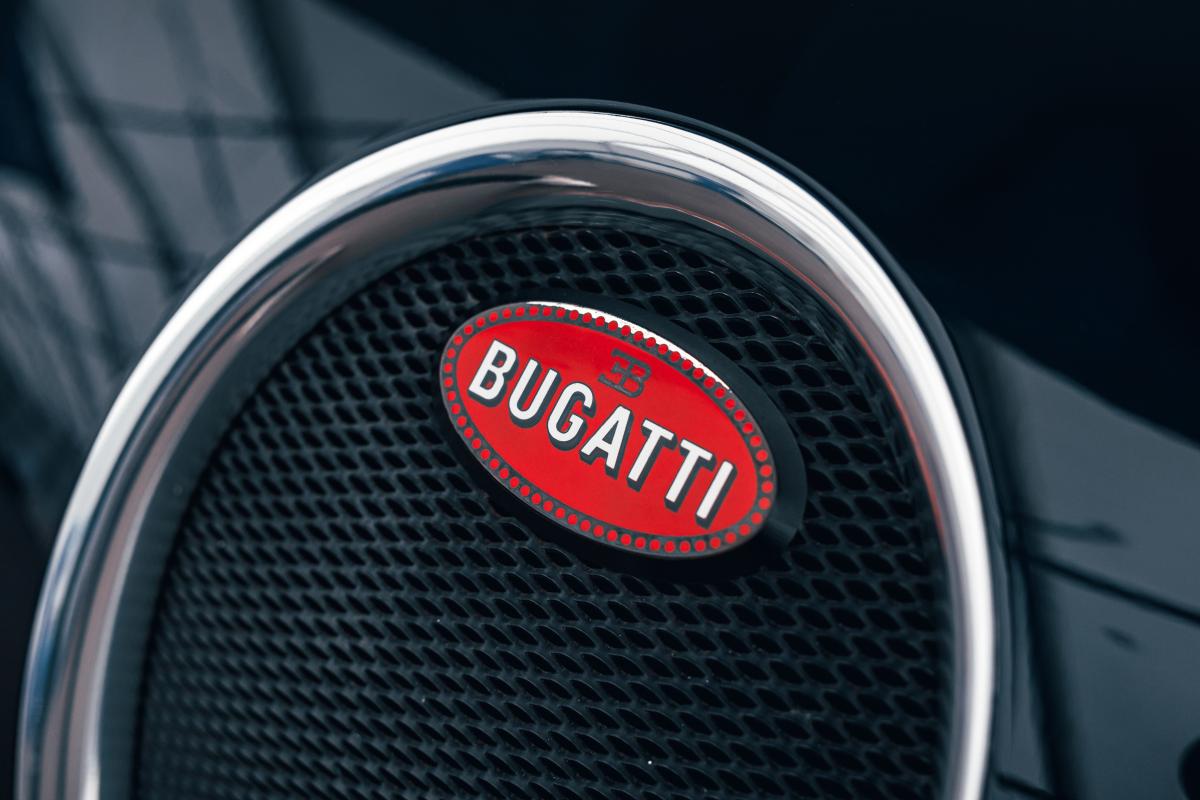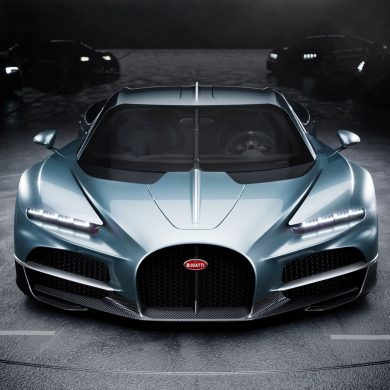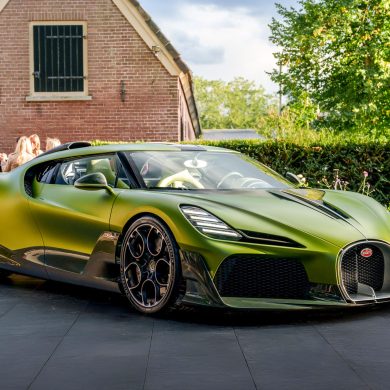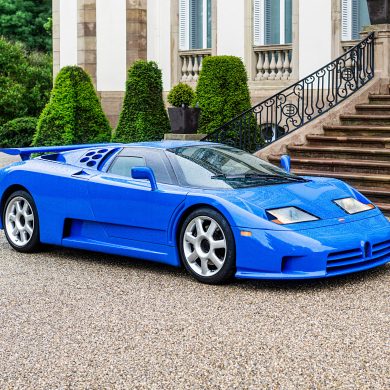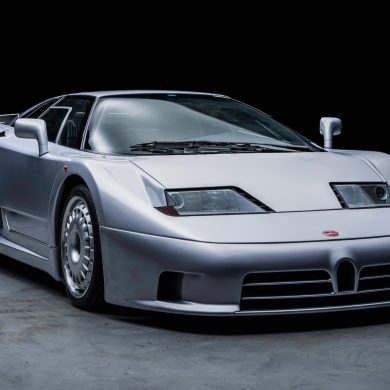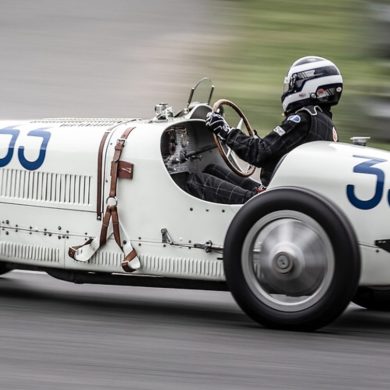150 grams of sterling silver, high-gloss enamel, first-class embossing quality, and a 3D effect. Since the brand was established, the Macaron – the Bugatti badge – has been a symbol of luxury, exclusivity, exquisite design, and unparalleled hand craftsmanship on the horseshoe radiator.
“The importance that the Bugatti Macaron still has for our brand today is shown by its unrivalled quality, the loving attention to detail, and also the weight. It is one of the very few components on our vehicles where weight does not play a role. The solid badge made of 970 sterling silver has a very high-quality design due to its size, and this is more important to us than a lightweight component. The deep-red and unmistakable oval on the vehicle has transported the famous name BUGATTI out into the world ever since the company began, and embodies the symbolic power of our brand myth.”
President of Bugatti, Stephan Wilkelmann.

A Bugatti Symbol for 110 years
Towards the end of 1909, in Molsheim, France, Ettore Bugatti placed an oval badge made of enameled metal on the radiator grill of the first official Bugatti, the Bugatti Type 13.

Ettore Bugatti himself thought of the concept of the oval shape with white lettering on a red background, using a similar logo for his former employer, Deutz in Cologne.
When Bugatti started producing vehicles, he deliberately chose a flat, but high-quality badge. As per the design instructions, the shape was formed from cutting a cylinder with a 45 mm diameter at a 30-degree angle. The popular use of radiator figures at the time would only have taken away from the magnificent designs of his vehicles. The only exception he made of this was the dancing elephant figure that he placed on the Bugatti Type 41 Royale in 1926, a replica of and a tribute to the sculpture that was made by his deceased brother Rembrandt.

Aside from the legible white letters on red background, the badge also had the EB (for Ettore Bugatti) initials in black, and 60 red dots on white a white surrounding border. The red symbolized power and passion, the white was for nobility and elegance, while the black denotes courage and excellence. It is said that the 60 dots were a symbol for pears or threads in an ‘Art Nouveau ‘way. Over the years, the appearance of the Macaron has only changed slightly.
3D Effects created on Bugatti Badge
The emblems of the modern Bugatti have been handcrafted at the Poellath GmbH & Co. KG Münz- und Prägewerk in Schrobenhausen, Bavaria. The tools used to make the Bugatti badge are produced by the company itself, and the manufacturing process is done by hand.

“Such a fine component can be made only by hand in this high quality,”
Poellath CEO, Thomas Demel
Currently, Poellath is the only company in the world that has the capability to produce the badge with the 3D effect from enamel.
Poellath is a company that specializes in the production of high-quality metal emblems and was established in 1778 in Schrobenhausen. In 1825, the King of Bavaria himself recognized the craft company for their technique in embossing.
The company relocated from the old part of Schrobenhausen in 1884 to its current location. In 1895, the company upgraded its production to use electrical engineering instead of steam power, and it was then that they also added their electroplating workshop. Aside from the badges they make for Bugatti, the company also embosses commemorative coins, awards, badges, and medals for clubs and companies.

Poellath has been producing the Bugatti emblems, initially for the Veyron 16.4 since 2003. When the Macaron for the Chiron was to be made in 2014, some changes were made.
“The new badge was to be larger than before, and also have a new and previously unknown visual depth. The Bugatti lettering and the dots at the edge are therefore located on one plane and are enameled, as is the background which is almost two millimeters lower. This creates a genuine 3D look and feel,”
The width of the Chiron badge was 14mm bigger and it was 8mm larger for the height compared to the Veyron.
Today, most Bugatti badges are in red. Only a select number of vehicles like the Chiron Noire and the Super Sport 300+ get the Macaron in black. Poellath also produces the smaller Bugatti badges that are used for various purposes including the vehicle key.


Over Ten Hours of Craftsmanship
The Bugatti emblem weighs a remarkable 159 grams, including the enamel and fastening screws. More than ten hours, spread out over several days is performed by around twenty skilled workers to make the emblem.
As part of the multi-stage process, the 970 silver base metal is embossed several times with up to 1,000 tons. From the base, the Bugatti lettering is raised by 2.1mm from the level of the border. Compared to casting, embossing achieves a contour that is sharper and of much finer quality. After embossing, the emblem will be enameled.

Enamel is glass fused onto iron, a decades-old manufacturing process. In the development of the Macaron, one special specification was that the enamel must use toxic-free materials. Originally, half of the materials used for enamel had lead. Currently, the enamel uses inorganic compounds like silicates and oxides making the process more demanding. The glass-like grains of the granulate melts between 750 to 900 degrees Celsius and become permanently fused with the silver base.
A unique feature is that the convex curvature of the emblem arises on its own. The curvature develops because at 600 degrees, the enamel already solidifies while the silver at underlying it continues to contract. This supports the 3D effect.

The raised glass-like compound is then finely sanded, and eventually polished by hand, while multiple checks are performed during the whole process.
“No machine is capable of doing this due to the different curvatures and the surfaces located at the back. The individual dots are also enameled and processed by hand,”
Thomas Demel
The fastening studs are made from one piece and are brazed on the surface as it is once again checked. One will notice the fine unavoidable pores in the enamel, and it should be noted that these are not defects, but are actually a testament to the manufacturing process, making each individual badge unique.

“Enamel ensures the highest-quality colors on metal. It remains color-fast and brilliant for decades, if not centuries. It also shows the special character of hand craftsmanship and the richness of detail. If the base material is made of sterling silver, like with Bugatti, its quality is increased even further. That is unique in this form in the automotive field.”
Thomas Demel
[Source: Bugatti]


